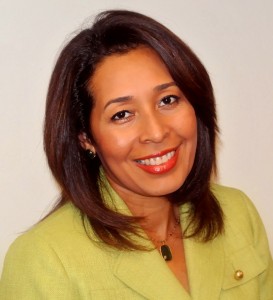For fifty years now, May has been Older Americans Month. It’s a time for celebrating older Americans and for encouraging them to share the wisdom and knowledge accumulated over their lifetimes. In our fast-moving, modern age, we can benefit from the guidance and experience of previous generations.
Seniors are not just looking back. They are looking to the future too and, defying all stereotypes, are embracing the high speed broadband tools and technology of the 21st century with enthusiasm and aplomb. A recent Pew study showed that 53 percent of those 64 and older are online. Many of them are using social networking sites, too. That same study revealed that seniors between the ages of 55–64 use smartphones, and AARP recently reported that 90 percent of people 50 and older own some type of mobile technology.
Technological know-how has increased across every age group, but even as these broadband-enabled devices and capabilities change our methods of communicating and ways to access information, some things remain the same: We all still want opportunities to improve and enhance our quality of life. So it shouldn’t come as a surprise that our seniors have recognized wireless technologies and broadband-enabled innovations as important tools for achieving these common goals.
As the President and CEO of the National Hispanic Council on Aging (NHCOA) and as an advocate for health equity, I am particularly pleased that our seniors are incorporating new broadband technologies into their daily lives. Advances in telecommunications technologies deliver many essential benefits to seniors, especially to those in communities of color or in rural areas. At the NHCOA, we have recently had some exciting chances to share and learn about the many health care opportunities made possible by these technological innovations.
The recent National Hispanic Medical Association (NHMA) annual conference included a panel discussion titled “Using Technology to Serve Hard-to-Reach Populations.” NHCOA participated in that discussion, and we presented information about the obstacles that often prevent access to health care. These “hard to reach” populations include members of ethnically diverse populations and rural residents, and these seniors often struggle to get quality health care due to location and geographical distance, as well as, sometimes, language and cultural barriers.
For seniors in communities of color that have a disproportionately higher risk of serious diseases and risk factors, including diabetes, heart disease, and obesity, new technological tools can play a vital role in combatting these chronic conditions and eliminating health disparities. Additionally, rural residents also contend with a shortage of primary care physicians. For many of our elderly, minority, and rural communities, these factors lead to declining health, reduced quality of life, and shortened life expectancy However, the availability of broadband and broadband-enabled technologies in the form of mHealth and telemedicine offer solutions and hope for a better future.
The use of advanced broadband-enabled video teleconferencing, remote monitoring devices, wireless biosensors, and various mobile apps have already made a real difference for many people. Rural clinics can offer video teleconferencing, allowing access to specialists. Wireless in-home monitoring devices can collect health data like heart rate, blood glucose, or respiratory rate and then send that information directly to medical personnel, eliminating the need for some office visits. A number of health apps, some specifically geared toward communities of color or senior populations, can help patients with general health concerns as well as those with specific conditions or diseases. Newly developed technologies have presented improved ways for our seniors to live independently. Personal emergency response devices, special shoes that track mobility and predict unsteadiness, and pill bottles that alert patients with sound and light reminders can all play a role in helping our aging and ethnically diverse populations enjoy enhanced quality of life.
I had the opportunity to learn about some of these cutting-edge solutions last week at a Capitol Hill briefing titled “Technology and Innovation in the Wireless Health Industry.” Wireless innovations are creating a health care revolution filled with opportunities for innovators, doctors, and patients alike, and the briefing highlighted three different stories of innovation at the intersection of health care and wireless technologies.
Proteus Digital Health, for example, develops products that enable patients to work with caregivers and medical professionals to create a plan for better health and wellness by analyzing personal health choices. Wearable and even ingestible digital sensors, can reveal the effects of lifestyle and health choices.. Also profiled was Asthmapolis, which uses mobile apps and inhaler sensors to help patients with asthma monitor their condition with physicians and prevent attacks.
These and other revolutionary health technologies have the potential to improve health and quality of life for our aging population, in particular. It is my hope that seniors will embrace these innovative solutions, just as they have readily adopted other wireless technologies. However, these innovations depend on the availability of a robust telecommunications infrastructure. If we want to increase the availability of these health care technologies and encourage the creation of new ones, we need to continue to deploy modern broadband networks that can accomplish this vital task. Upgrading and expanding our nation’s networks will ensure access to these and other life-enhancing technologies for all Americans, so our seniors can thrive, and we can celebrate their wisdom for years to come.
Dr. Yanira Cruz is the President and CEO of the National Hispanic Council on Aging (NHCOA). She focuses on providing the Latino perspective on public health and older adult issues to increase policy-maker and public understanding of the needs impacting Latinos and disenfranchised sectors of our society, and to encourage the adoption of programs and policies that equitably serve everyone.


Recent Comments